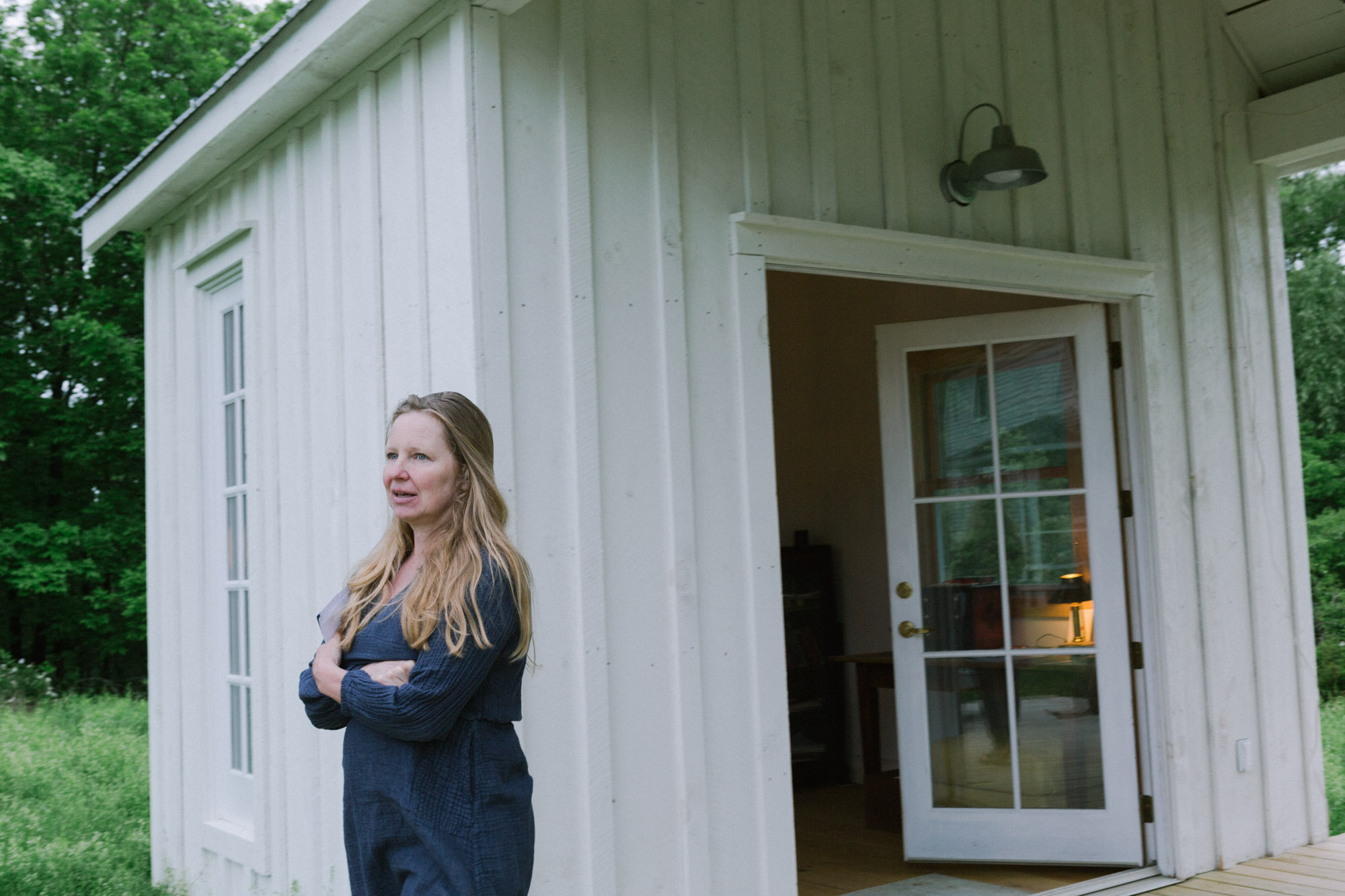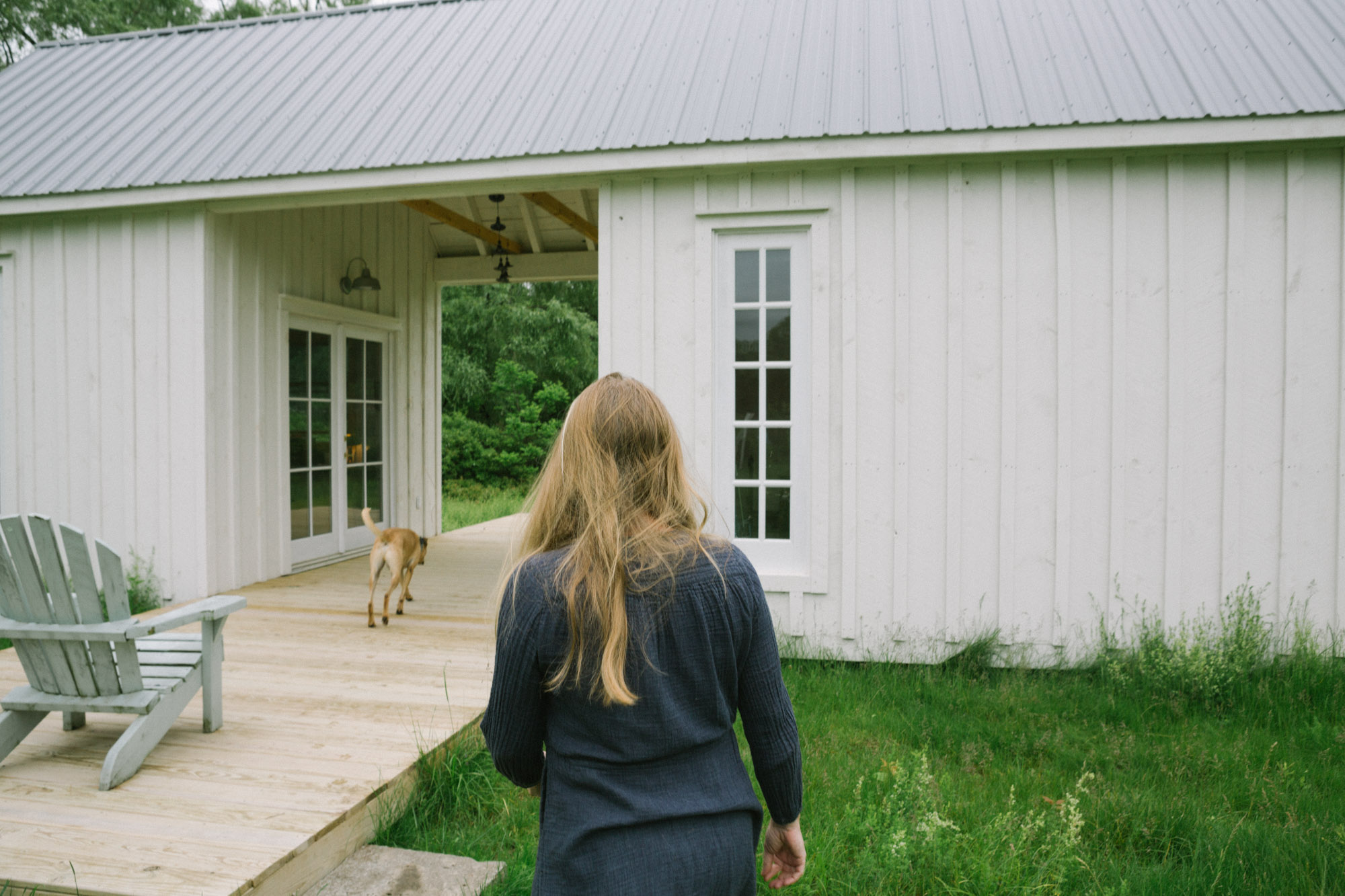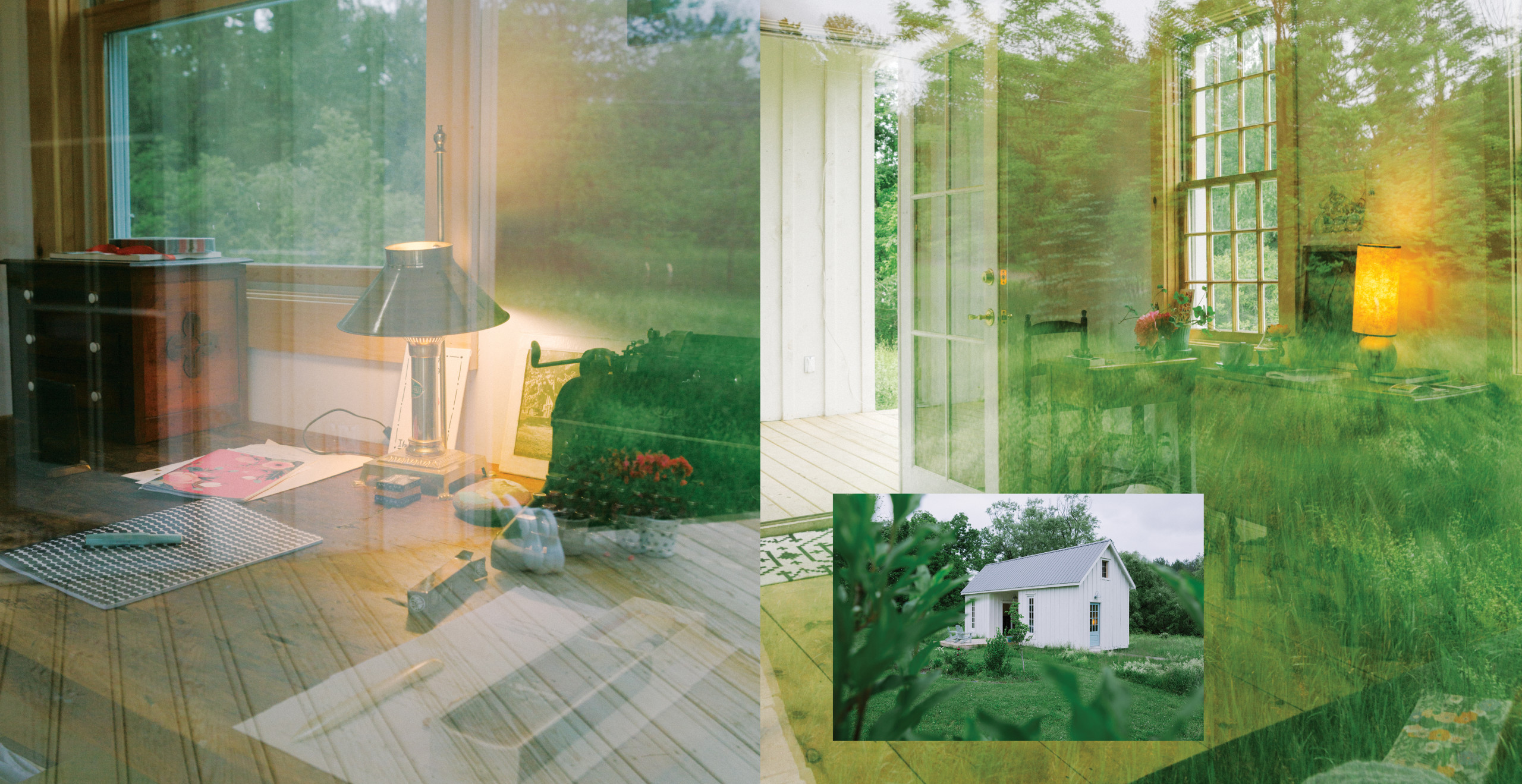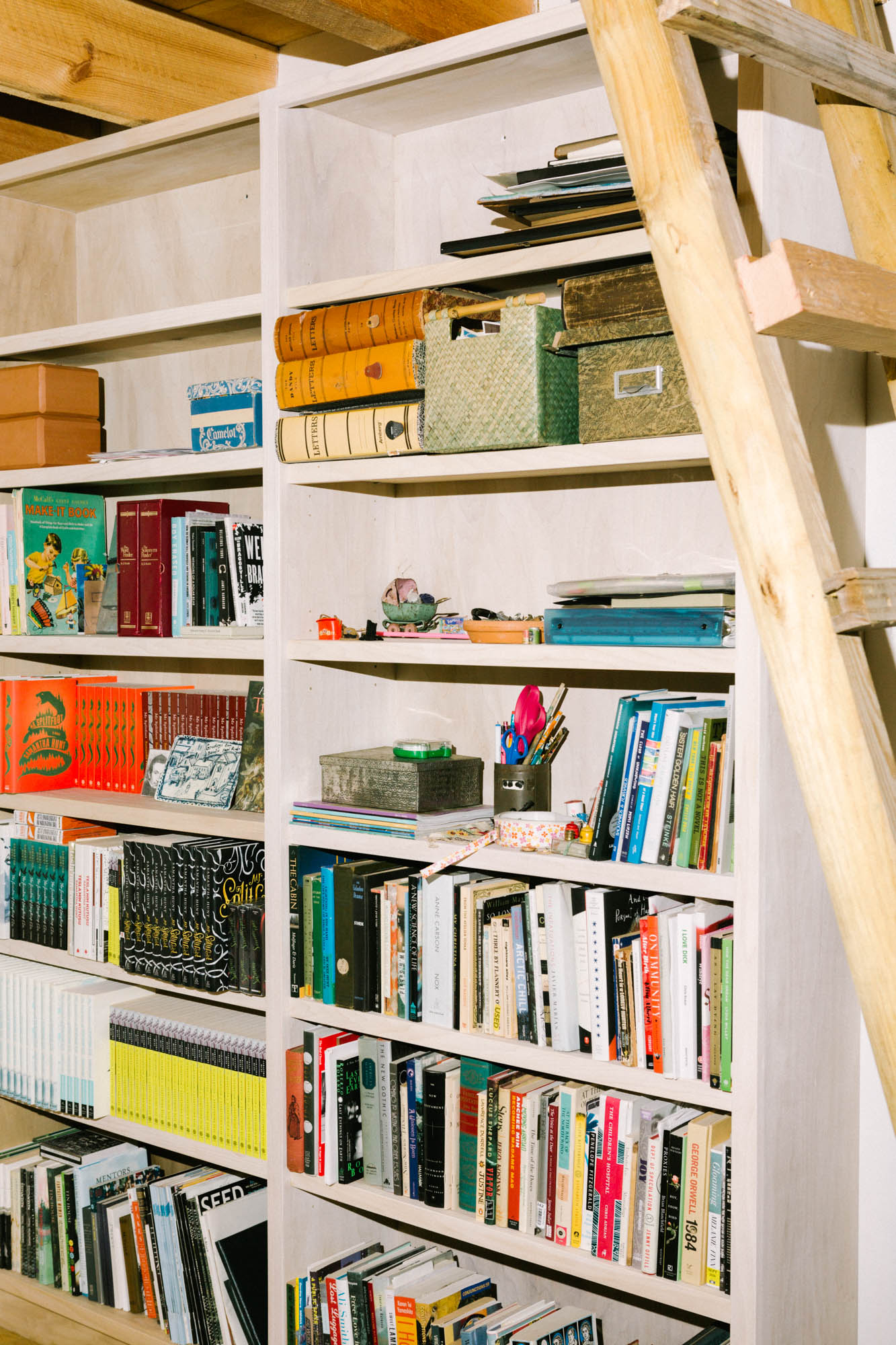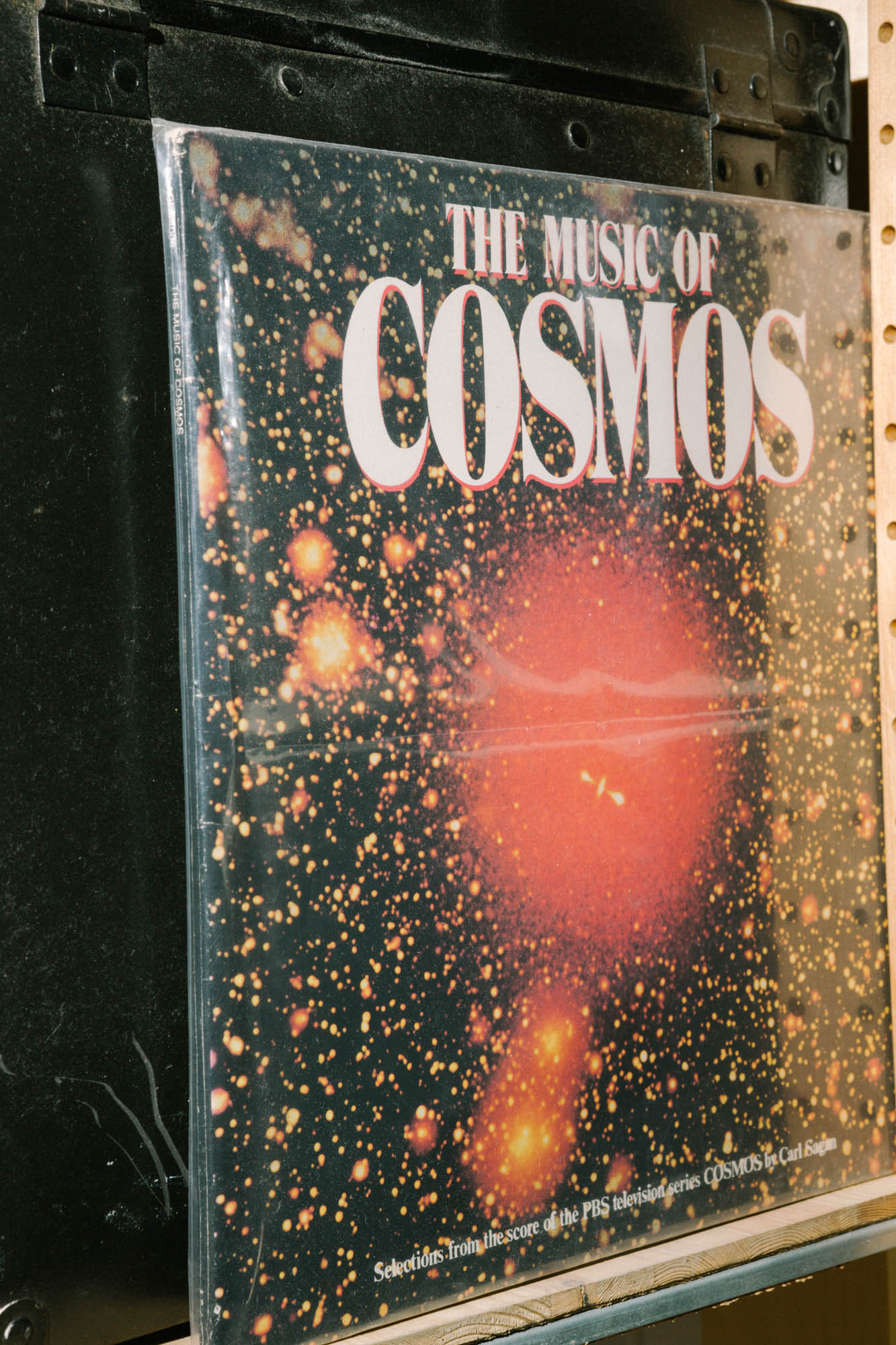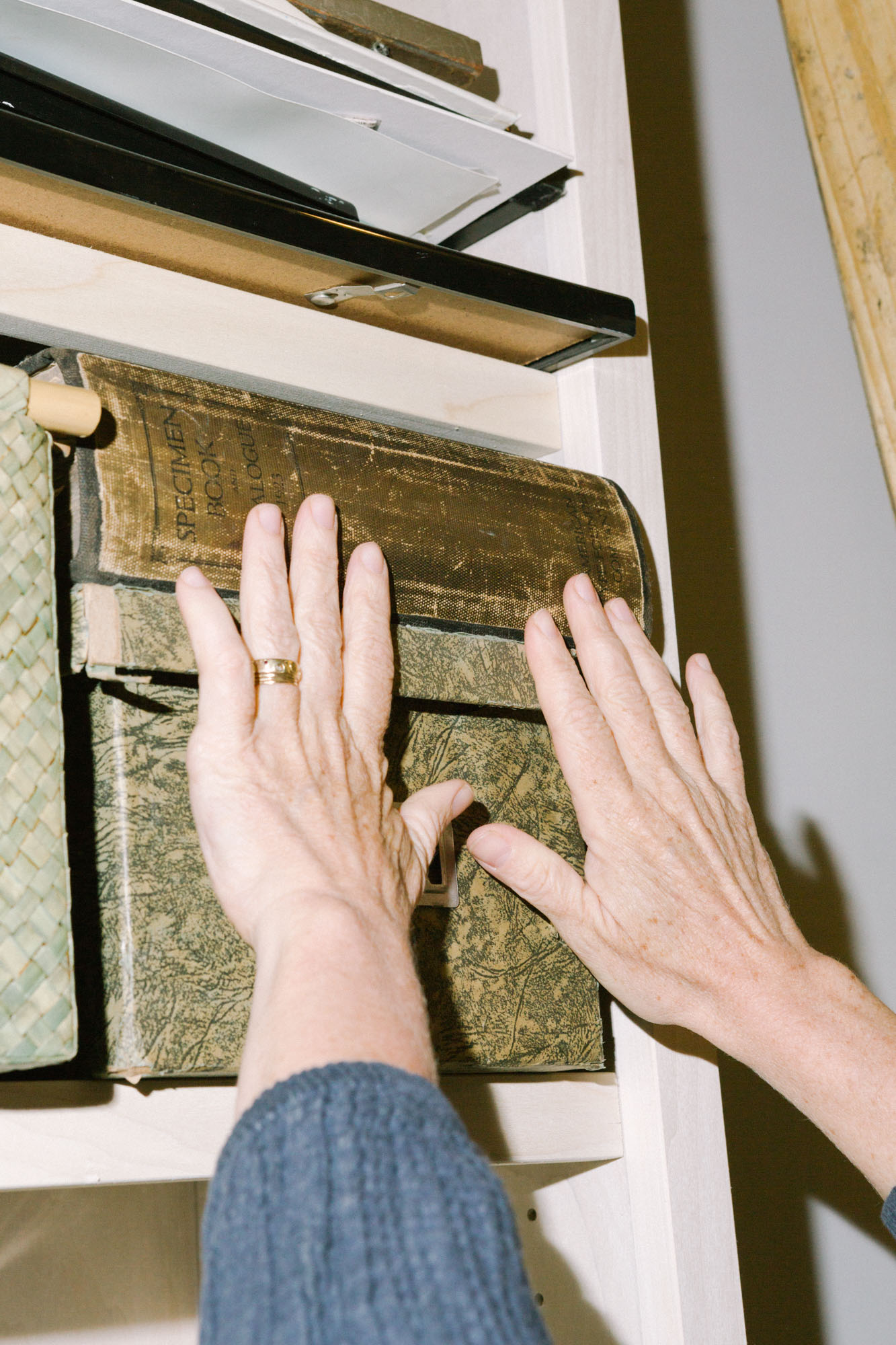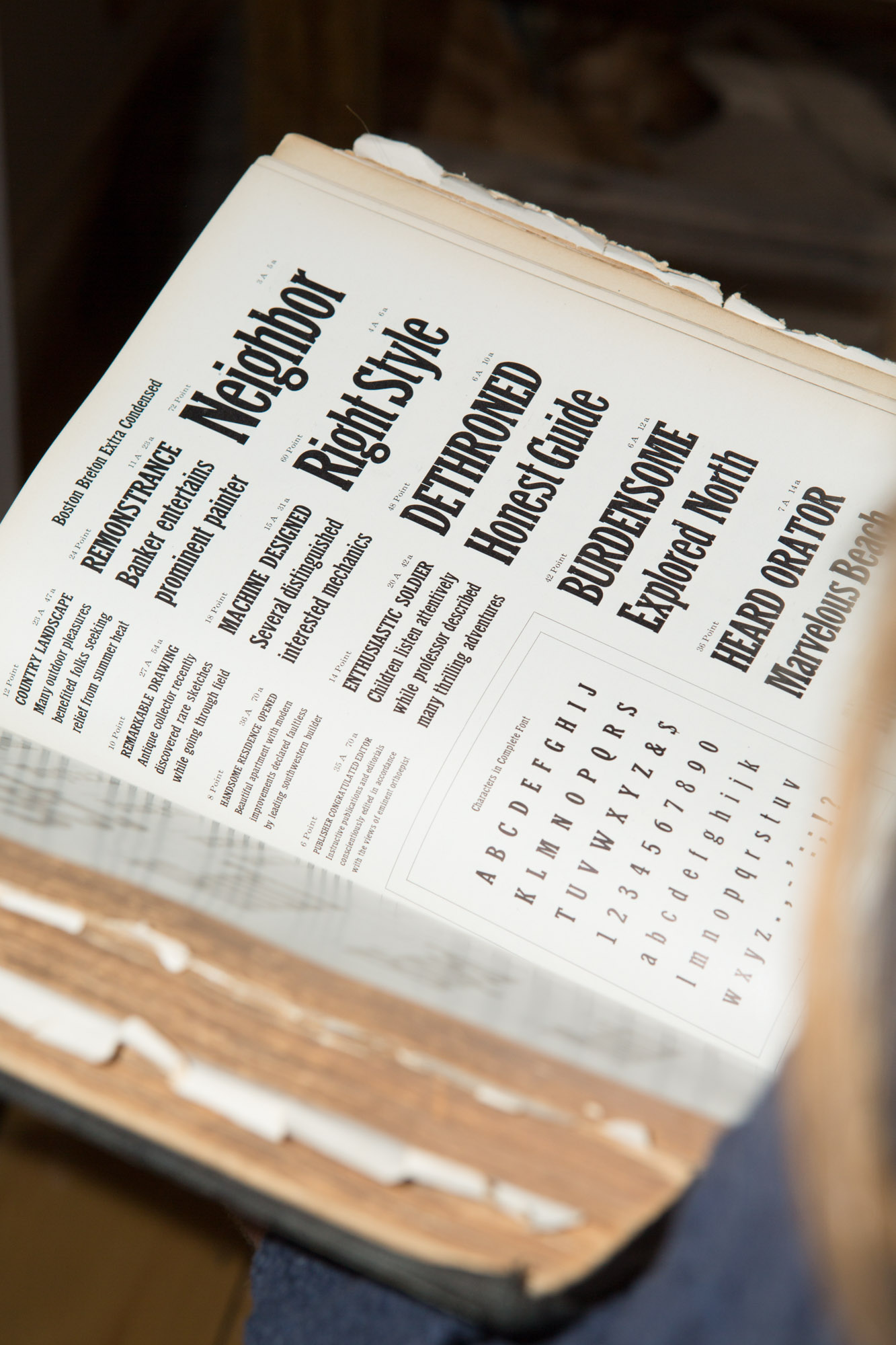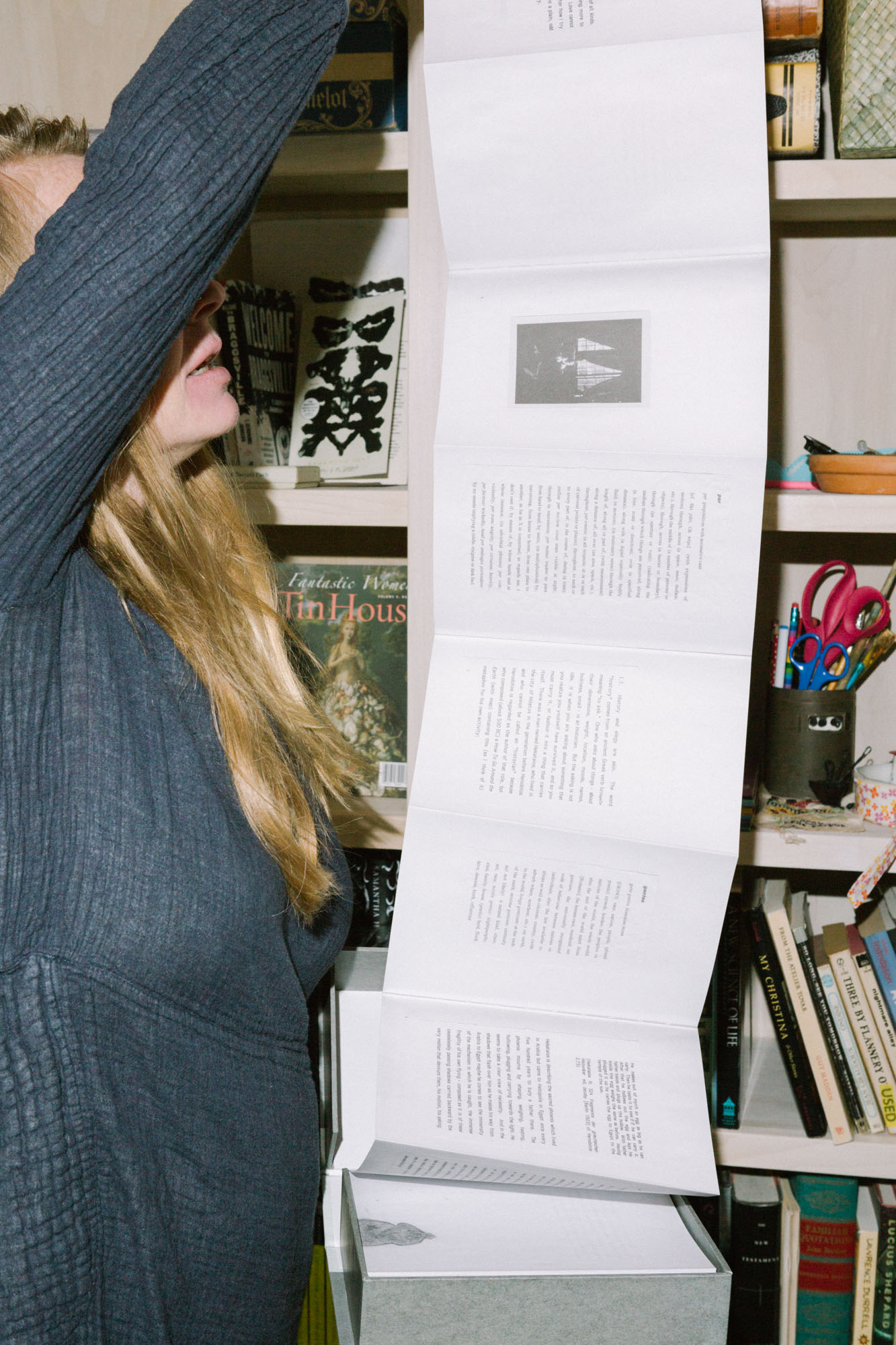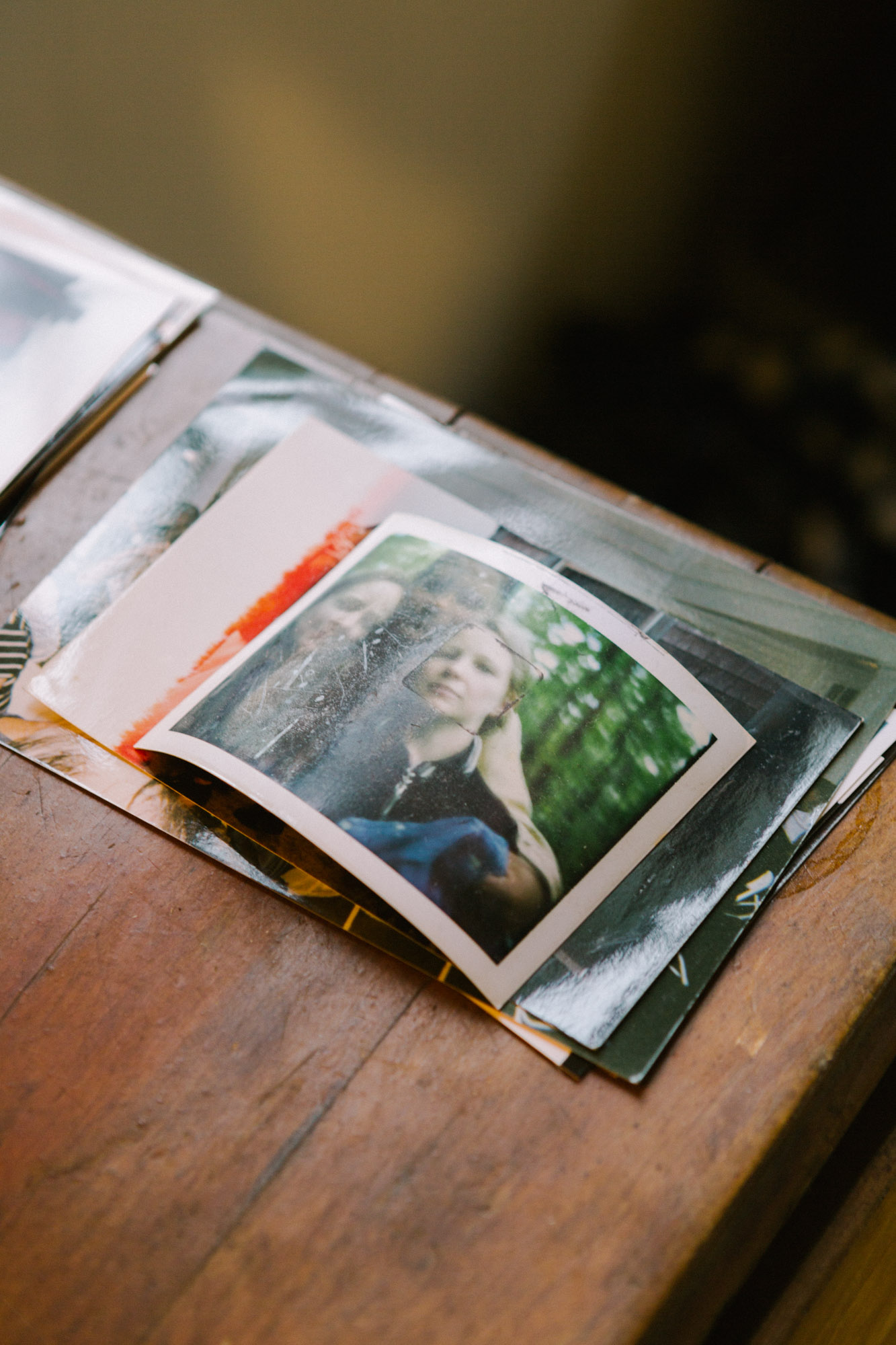As we explore the importance of place to our work in the Spring 2022 issue, Prattfolio revisits a selection of past editions of Practice, our glimpses into the studios and spaces where Pratt Institute faculty write, design, make art, and more.
Here we look back at our 2017 visit to the writing studio of Professor Samantha Hunt, in the Hudson Valley village of Tivoli, New York. Hunt, the recipient of a Guggenheim Fellowship and a PEN/Faulkner finalist, is the author of three novels—Mr. Splitfoot, The Invention of Everything Else, and The Seas—and a short story collection, The Dark Dark. This April, her first book of nonfiction, The Unwritten Book: An Investigation, will be published by Farrar, Straus and Giroux.
The story below was originally published in Prattfolio Fall/Winter 2017. Photos by Daniel Terna.
Samantha Hunt’s design for her writing studio, a concept some 20 years in the making, came to fruition outside her upstate New York home in spring 2017 (above).
“I saw the writing studio as two separate rooms, knowing the chaos of my big family would spill into the space”—Hunt and her husband have three daughters—“but still wanting the classic ‘room of one’s own.’”
On the desk, left: Hunt, whose latest book is the short story collection The Dark Dark (Farrar, Straus and Giroux, 2017) writes her early drafts longhand. A Kaweco fountain pen, a gift from her family, is a new addition to her instruments, along with the paper-cover notebooks. “I’ve gotten more casual about my notebooks. As long as I can slip it in my purse, it works.” (She also writes on the train to and from Pratt.)
On the desk, center: A bone folder speaks to another of Hunt’s practices: bookmaking. “When I started teaching at Pratt, I taught a bookmaking class at night, after working my day job at the Village Voice doing graphic design.” More recently, she bound the original manuscript of her novel Mr. Splitfoot, two books woven together, oriented in opposite directions chapter by chapter.
On the desk, right: Hunt’s late father’s Royal typewriter is among the inherited objects in her studio. Her great-grandmother’s letters and a photograph of her home line the desk, and almost all the furniture in the room came from a late neighbor. “A lot of the objects here are ghost-y things. Part of my responsibility is keeping the archives of dead people.”
Inset image of the studio exterior: To site the studio, Hunt scouted her yard for a spot that was just out of Wi-Fi range. (Working on her last book, she would write in her car, parked by the nearby Hudson River, to avoid the distractions of the internet.) To create a further sense of retreat, she installed just two slender windows on the side of the studio that faces her home.
Inside the studio, beside the open door: Hunt’s daughter set up the small desk to do impromptu origami, but it became a permanent writing station for the author. An unexpected benefit of the double studio, Hunt sits in different spaces to work on different projects—three at the time of Prattfolio’s visit: a new novel, essays on the ways people are haunted, and an adaptation of Mr. Splitfoot for television.
-
![A white bookcase with books lined in the walls in Samantha Hunt's studio.]()
Bookcases line the walls in one room of Hunt’s studio.
-
![A shot of the 1981 LP of The Music of the Cosmos from Carl Sagan's PBS series.]()
Among Hunt’s records: The 1981 LP of The Music of Cosmos, tracks from Carl Sagan’s PBS series.
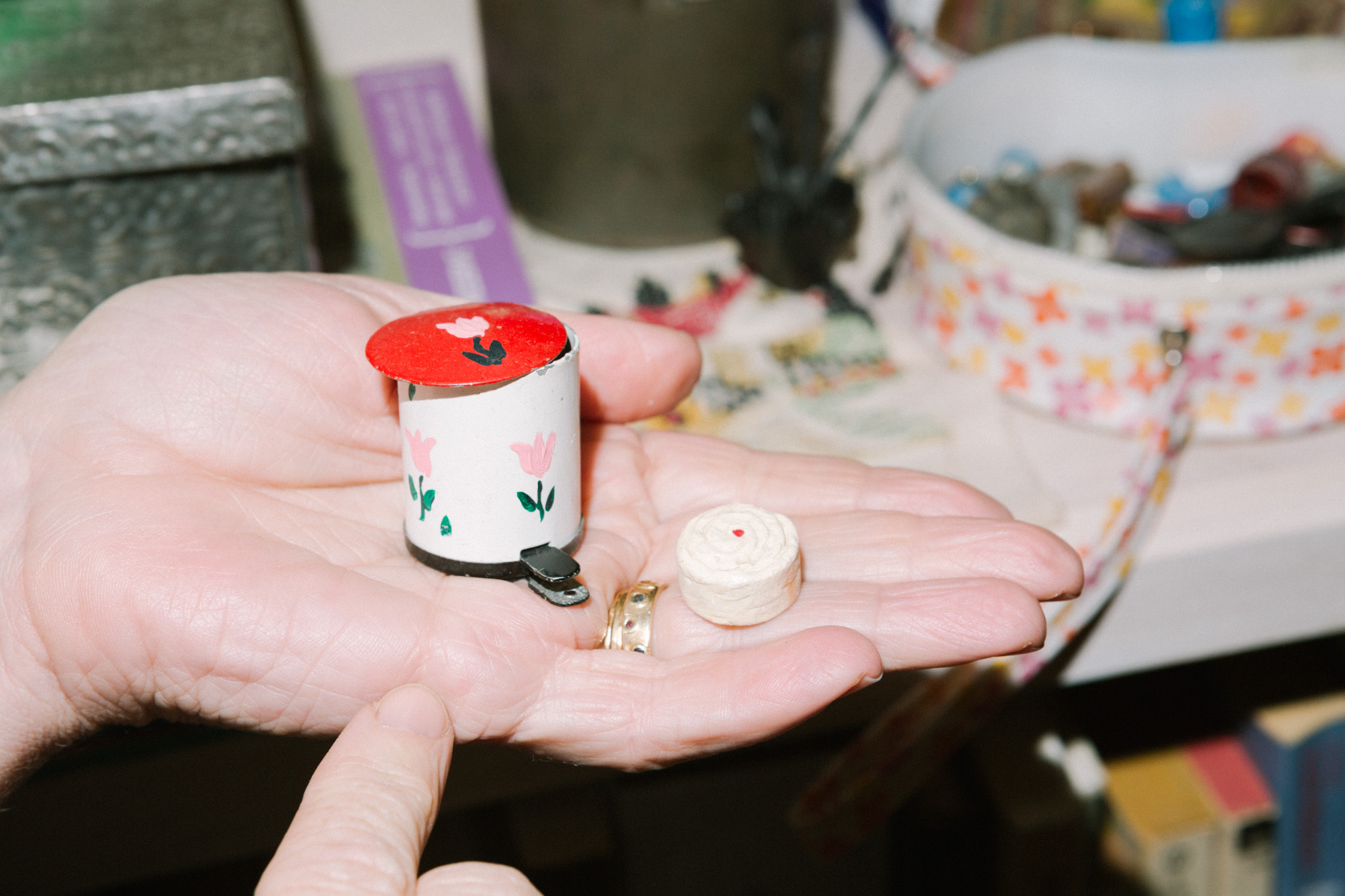
-
![Hands reach for a thick vintage book]()
Peeking into American Type Founders Company’s Type Specimens and Catalogue from 1923.
-
![A thick typography specimen book open to a page with thick serif type]()
-
![Samantha Hunt unfurls an accordion book with words and black-and-white pictures]()
Unfolding a copy of Nox by Anne Carson, published as an accordion book, an elegy to Carson’s brother.
-
![A stack of glossy color photograph prints]()
Keeping photographs is a way of holding family stories.
